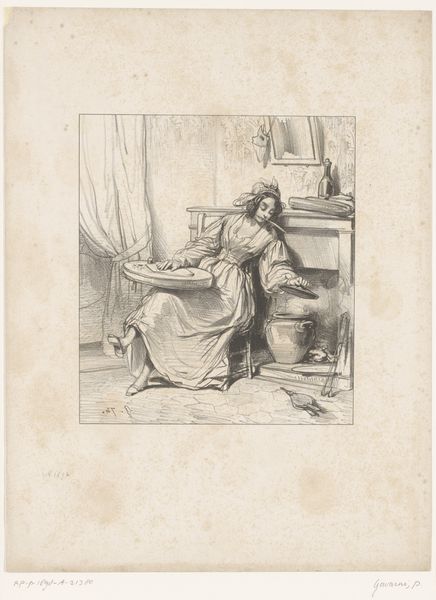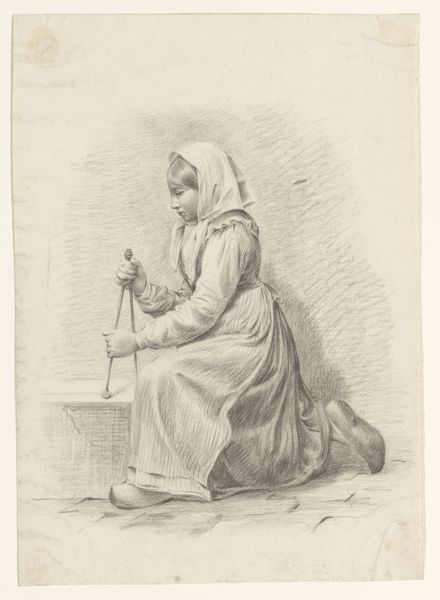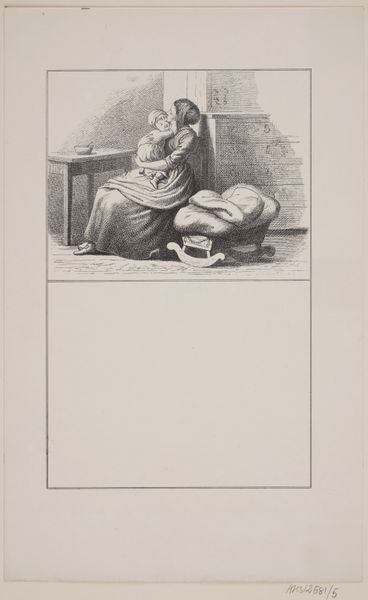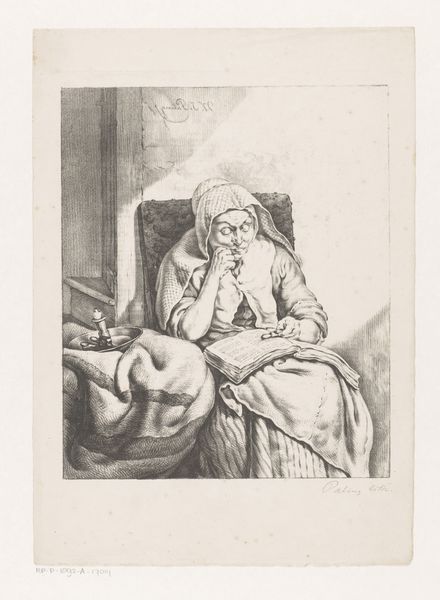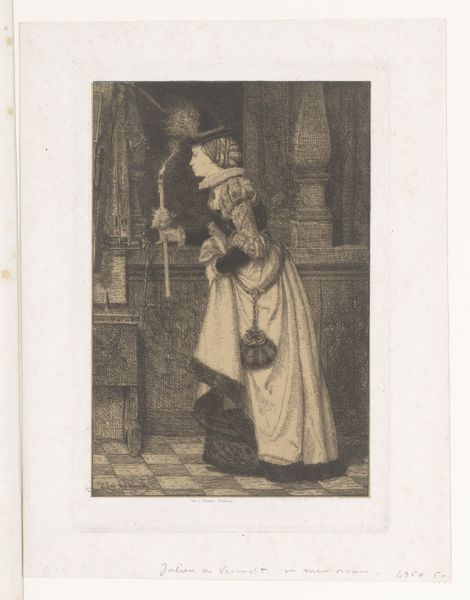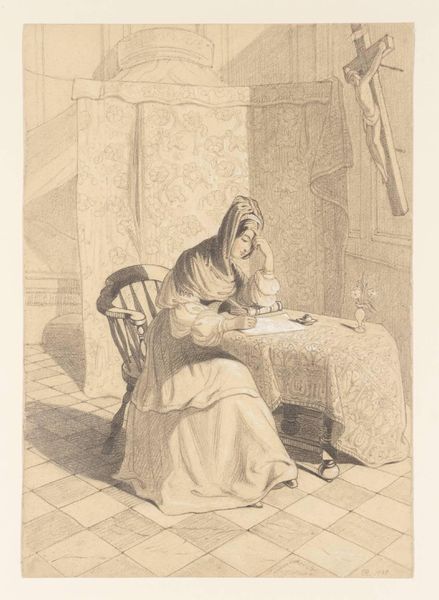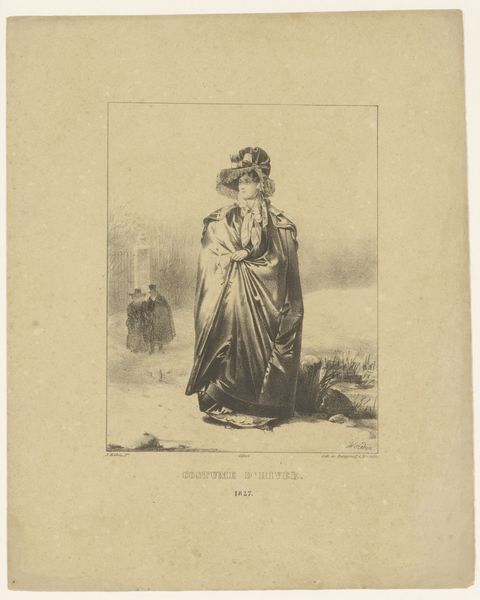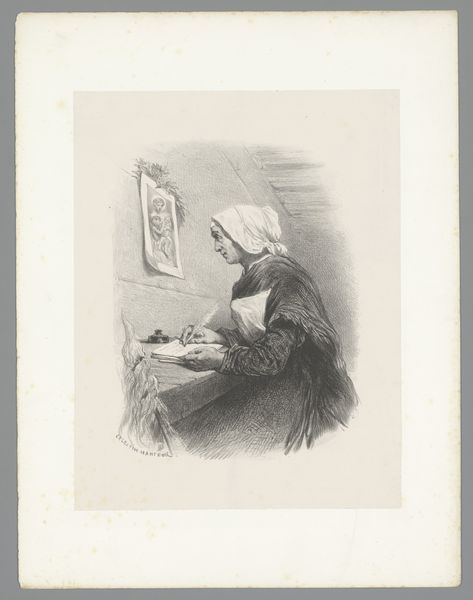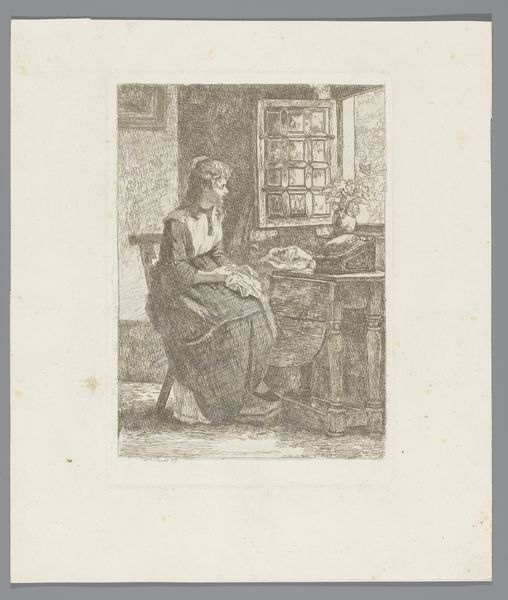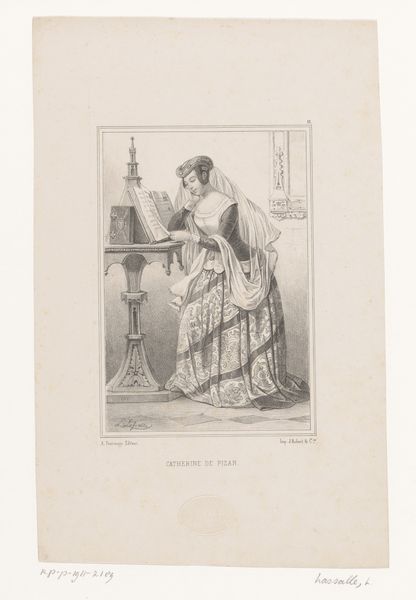
print, engraving
#
portrait
#
mother
# print
#
old engraving style
#
genre-painting
#
engraving
#
realism
Dimensions: height 238 mm, width 157 mm
Copyright: Rijks Museum: Open Domain
Curator: Right, let’s take a look at Constant Aimé Marie Cap's "Child with Mother on her Lap Looking at a Birdcage on the Table." It's an engraving, dating back to 1883. What are your immediate thoughts? Editor: It's strikingly still. A captured moment. Something about the precise linework gives a feeling of suspended time, or maybe of preservation. The soft rendering adds this feeling of nostalgia... and look at the bars on that birdcage. What about freedom? Curator: Ah, yes, the cage! An apt visual metaphor, of course, for the societal constraints placed on women and children in that era. But then again, isn't there a strange sense of domestic security also in the piece, a kind of contented entrapment? Editor: It is complex, because this scene could read differently for a mother or for the little child. If we delve deeper into the imagery, birds often symbolize the soul, transcendence, but in a cage... a soul stifled? Or protected, as you mentioned. The cage itself feels very prominent in the composition; very visible. Curator: It's certainly intriguing how Cap places that birdcage almost at eye level with the child, inviting the gaze, but also drawing a symbolic link between them. Makes you wonder, doesn't it? Did they have caged canaries in those days? What does it say about Cap's view of the role of the mother at the time, is there also a subtle restriction for women too in her dress and home? Editor: I find myself pondering what happens outside this frame. Are those fine crisscross markings a way to suggest all the external influences pushing inward? And where does that young gaze linger, beyond the cage and outside? Curator: These domestic scenes of daily life were typical in this period; but often masked social critique and insights regarding class and family hierarchies. It gives pause to observe how familiar such issues remain more than a century later. Editor: It does, doesn't it? A beautiful image opens into something unheimlich, or uncanny; that peculiar strangeness of seeing something familiar suddenly cast into the dark corners of social history.
Comments
No comments
Be the first to comment and join the conversation on the ultimate creative platform.

